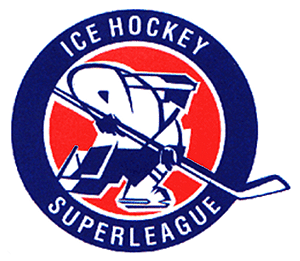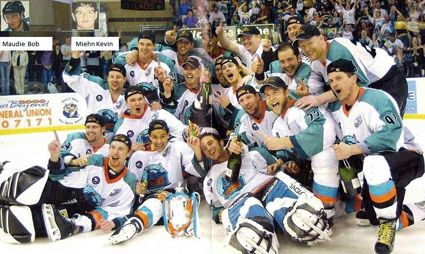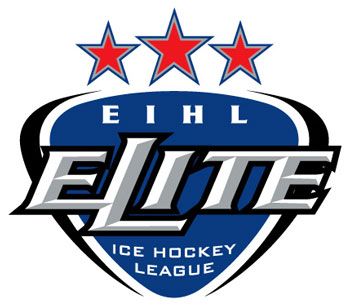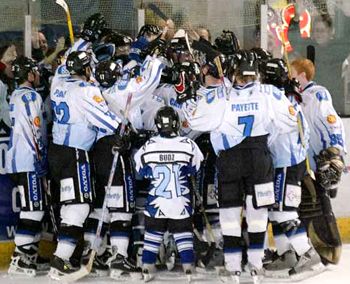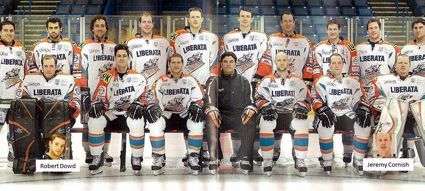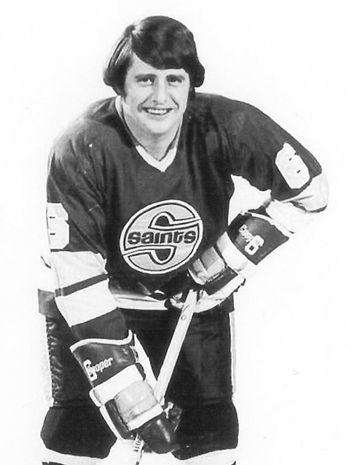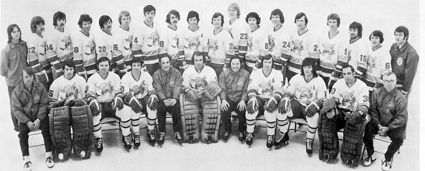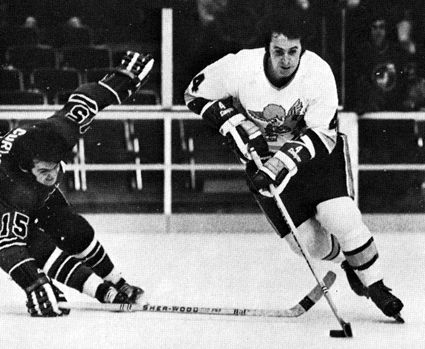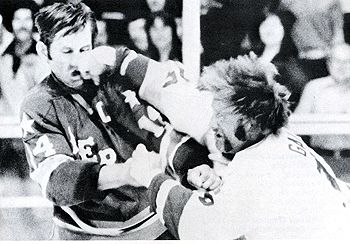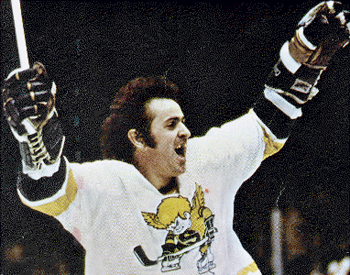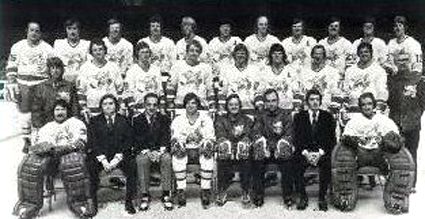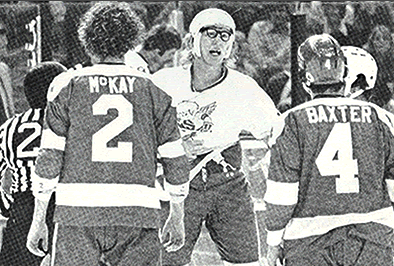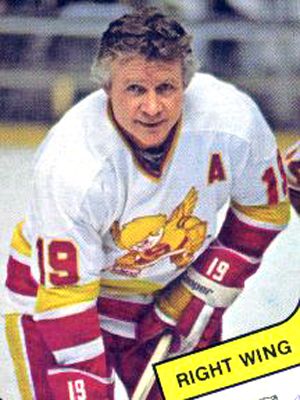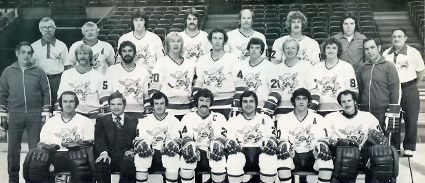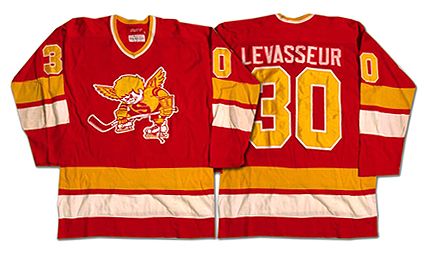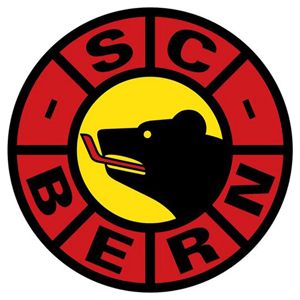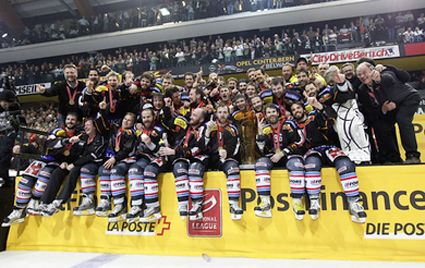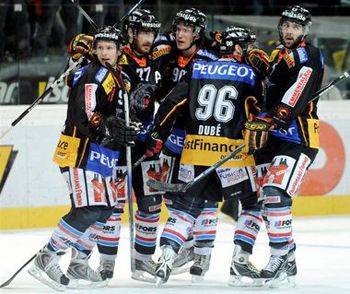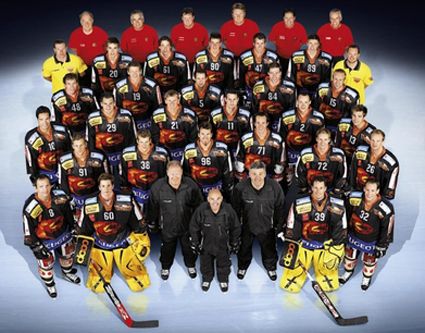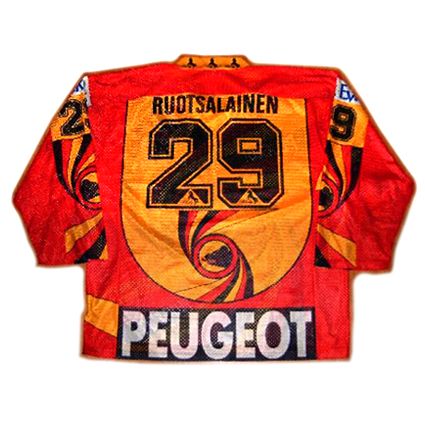With the 2012 Summer Olympics in London now in full swing, it seems like an appropriate time to conclude our July tour of the world of hockey with a look at the recent history of club hockey in the United Kingdom, which rose to a national level in 1982 when three regional leagues, one in southern England, one in the north of England and one in Scotland, were replaced by a single entity known as the British Hockey League.
The 12 team Premier Division of the BHL lasted 14 seasons and was run in the promotion/relegation system of European soccer. 22 different teams participated over the course of the league's run. Only two teams were able to remain in the Premier Division for every one of it's seasons, the Durham Wasps and the Nottingham Panthers, with the Wasps winning the championship on five occasions, 1985, 1986, 1989, 1991 and 1992, the most of any club.
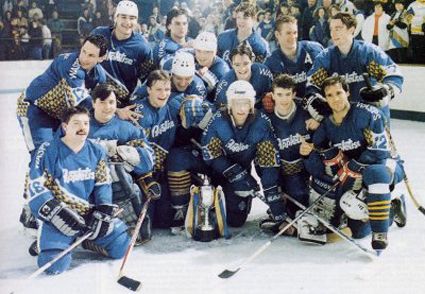
Other BHL champions were the Dundee Rockets in 1983 and 1984, the Murrayfield Racers in 1987 and 1988, the Cardiff Devils from Wales in 1993 and 1994 and the Sheffield Steelers in 1995 and 1996, keeping alive the tradition of teams winning back to back titles, which occurred six times in just 14 seasons!
There was also a Division One below the Premier Division, which on occasion was divided into North and South conferences. 36 teams participated in Division One during it's time, with only the Devils earning the promotion from Division One and rising to the Premier Division championship.
In 1996-97, the Ice Hockey Superleague replaced the Premier Division, with the new British National League acting as the new Division One, although the promotion/relegation system was not used. The IHSL was comprised of just eight teams it's first season but clubs came and went and went and went over the seven seasons of operation. 13 different teams played in the IHSL, including three from Newcastle alone.
At the same time, a third level of hockey came into being, the English Premier Ice Hockey League, the EPIHL.
The Steelers won the IHSL championship in 1997, followed by the Ayr Scottish Eagles in 1998, the Devils in 1999, the London Knights in 2000, the Steelers in 2001 and 2002 with the Belfast Giants winning the final title in 2003.
The lower British National League lasted through 2004-05 and saw 23 teams compete in the league which had 12 teams at it's peak. the Fife Flyers won 3 titles, the Guildford Flames 2 and five other clubs one each.
The next phase of British ice hockey arrived in 2003-04 with the creation of the Elite Ice Hockey League, the replacement for the IHSL.
The three surviving teams from the IHSL formed a new league with a lower salary cap and a better commitment to British players with a rule that allowed only 12 foreign players, which attracted three teams from the British National League as well as two newly formed clubs in London and Manchester.
After some political wrangling with the BNL and the governing body, Ice Hockey UK, the league got underway in the fall of 2003, a season won by the Sheffield Steelers over the brand new Manchester Phoenix, who suspended operations following the season (after a vote by their fans!) while a new rink of a favorable size was constructed. The 2004-05 season, which saw the arrival of several NHL players due to the season missed due to the lockout, went the way of the Coventry Blaze.
For the 2005-06 season, the Edinburgh Capitals and Newcastle Vipers left the lower ranked BHL to join the EIHL, which along with the departure of the Bracknell Bees, led to the demise of the BNL, which elevated the EPIHL to second tier status.
Nine teams now began the EIHL season, only to see the London Racers fold in November following a lot of difficulty in fielding a competitive team and finding an appropriate home rink, which included several safety related incidents with the boards and glass of the tiny area, which seated less than 1,000 fans. Meanwhile, the Vipers had a dream season, capturing the championship in it's first season of play.
With a new arena on the way, which paved the way for a return of the Manchester Phoenix, and the Hull Stingrays being elected to join the league, the total number of clubs was raised for the first time to 10 in 2006-07, which also saw the adaptation of the new, "by the book" standards put into effect by the NHL concerning holding, hooking and interference, which raised the level of play to a higher speed and attracted more fans. Nottingham would take the championship at the conclusion of the season.
Sheffield won the title in 2007-08 and repeated the feat again in 2008-09, their third overall.
Following the 2008-09 season, Manchester announced it's intentions to drop down to the EPIHL, as did the Basingstoke Bison. The Braehead Clan were and Dundee Stars were then elected to replace the two departing clubs which allowed the league to again remain at 10 teams. The Belfast Giants were the champions in 2009-10, their first title since 2003.
The Nottingham Panthers were crowned the champions in 2010-11 and for the 2011-12 season, Fife in Scotland replaced Newcastle in order to again maintain the current level of clubs at ten despite the seemingly constant changes in franchises, which are uniquely distributed among the four countries of the United Kingdom, with 4 now in Scotland, 1 in Northern Ireland, 4 in England and 1 in Wales. Nottingham repeated their championship following the most recent 2011-12 season. The Panthers third title now ties them with Sheffield for the most in the EIHL's nine seasons.
The majority of the players in the EIHL come from North America, Canada in particular, which leads to a more physical style of play compared to other European leagues, and player movement is a regular occurrence, as long term contracts are uncommon.
Ice hockey in the UK is still a very niche sport, receiving little coverage by the media, with only the finals being shown live in 2010. The EIHL is considered to be below the leagues in Germany, Finland and Sweden, but on par with Italy, Denmark and Norway and above the Netherlands and France. For comparison, it is considered to be roughly equivalent to the ECHL, the third level of North American professional hockey.
Today's featured jersey is a 2004-05 London Racers Adam Dobson jersey. Jerseys in the English Premier Ice Hockey League are a mixed bag of loud and garish, influenced from the east by those worn in various European leagues, and classic and traditional, with influences coming from the NHL to the west, with today's featured jersey clearly being one of the more subdued ones, looking very much like the Canadian jerseys worn in the 2010 Olympics.
In some ways, we feel guilty in choosing a London Racers jersey to represent all of British ice hockey, as the team was nothing less than a failure, if not an embarrassment, as their first hastily organized season saw the club finish with an absolutely abysmal 3-49-2-2 record while playing in a building constructed back in 1873.
While their second season saw the club move to a new arena, it was very small, even by British standards. The club also hired a former AHL player to coach and benefitted from the NHL lockout, which allowed it to attract a pair of NHLers, which contributed to an acceptable 19-19-9-3 mark, which saw the team improve by 40 points and climb out of the cellar.
Their third season was cut short when first, an opposing player suffered serious facial injuries after hitting an object which was protruding from the arena boards. Then, there were issues a week later when the plexiglass at the arena shattered in an irregular manner, injuring a spectator and causing a game to be abandoned. When another piece of glass broke in practice in the same way, serious safety concerns about the arena were raised. When the team could not find a new home or reach an agreement about improvements at the rink, the club withdrew from the league and folded just 17 games into the season, although the arena management claimed that the concerns about the arena were a smokescreen to cover the club's financial problems.
To be fair, while there have been a number of long-running successful teams in Great Britain, only three of the current ten teams were formed prior to 1988, the Cardiff Devils (1986), Nottingham Panthers (1980) and the Fife Flyers, who date back to 1938, while four of the ten only came into being after 2000. While Fife is the oldest team in the league, they only joined the EIHL for the 2011-12 season.
Meanwhile, other long established teams fell by the wayside in the 1990's, the Ayr Bruins (1936-1991), the Blackpool Seagulls (1951-1993), the Durham Wasps (1947-1996) and the Murrayfield Racers (1952-1996).
Sheffield, Nottingham and Cardiff have all played in the British Hockey League, the Ice Hockey Superleague and the Elite Ice Hockey League over the last 30 years, which does not speak to a great deal of stability in the leagues they play in, while the fact only three teams have competed in all three leagues does not speak to the stability of the majority of British clubs themselves, especially when one considers the top level has been run without the relegation system since 1996-97.
Still, five of the ten teams in the current EIHL have participated for every season and the league has managed to maintain it's membership at 10 clubs for five of the last six years, which hopefully is a sign that the league, which will be concluding it's first decade this coming season, can achieve a level of stability, and perhaps even growth, with speculation of expansion to large population centers of Manchester, Dublin and London, as you would hope that a city of 8.1 million people could support a team in a league where the average rink holds just 4,200.
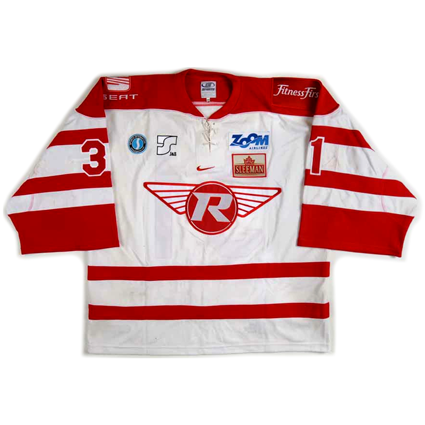
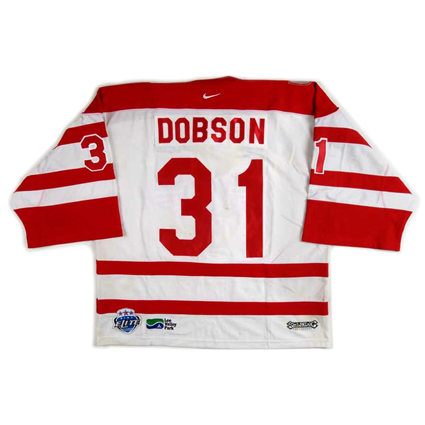
Today's video is the Elite Ice Hockey League playoff finals from the recently completed 2011-12 season, which saw the Nottingham Panthers repeat as champions with a win over the Belfast Giants.
Honestly, there's a few leagues in North America (MLB, NFL & NBA) that could learn a thing or two about attractive championship trophies from the British.

